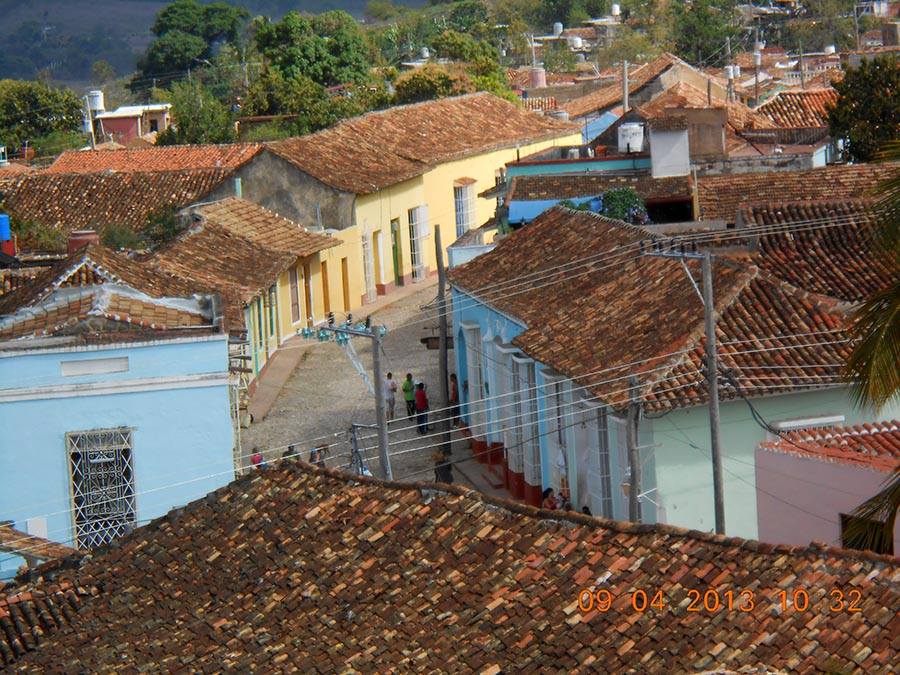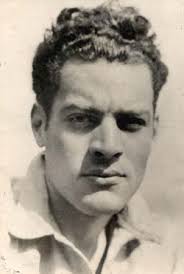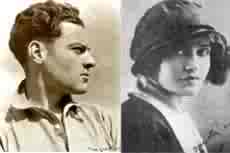LIFE AND DEATH OF JULIO ANTONIO MELLA.
Julio Antonio Mella was born in Havana on March 25, 1903 . As the current law did not allow the father to recognize those born out of wedlock children , awarded him the surname of the mother. He was enrolled in the Justice Department as Nicanor Mac Partland Diez.
The September 30, 1921 , Nicanor entered the Faculty of Philosophy and Letters of the University of Havana . Rescued the father’s surname and adopted for themselves the name of Julio Antonio . Prominent , took over management Sportsman magazine Alma Mater , where he also published his writings.
In 1922 , while leading the university reform movement , founded the Student Federation (FEU ) then only the house of higher learning in the country , in which he was the first executive secretary . He also organized the First National Congress of Students. But soon realized that to transform the University had to transform the country first .
In 1924 he joined the Communist group in Havana . Then he was among the founders of the Anti-Imperialist League of Cuba and the first Communist Party of Cuba , of which he was a member of its Central Committee.
Arrested under the unjust accusation of terrorist by the Machado regime , staged a hunger strike that shook Cuba and ended with his acquittal. The party, which disapproved of these methods , criticized him for it and guided him into exile in Mexico .
In Juarez ‘s homeland , joined the Communist Party of that country and developed in the body of this organization , El Machete, an active journalistic work.
Even in exile, Mella was still a danger to the Machado regime. Especially when in the spring of 1928 he founded the Association of Cuban Revolutionary New Emigrants ( ANERC ) .
The only requirements to join the opposition ANERC were the Machado tyranny , the dream of an independent Cuba economically and politically and acceptance of armed struggle as a method of combat.
The main partners of the Cuban revolutionary leader in its draft national liberation were people closely linked to the communist movement as Leonardo Fernández Sánchez , Alejandro Barreiro, Manuel Cotoño , the union Sandalio Junco ( a decade after this deserted the first PCC ), Antonio Penichet and Aureliano Sánchez Arango .
His death.
On the afternoon of January 10, 1929 , Julio Antonio Mella was at the headquarters of the International Red Aid ( SRI ) , in the historic center of Mexico City , immersed in preparations for the founding of a unified trade union center in the country of Juárez. At dusk he left the premises along with his life partner and struggles , Tina Modotti .
She went to a post office to send a telegram , he enrumbó towards the canteen India , where he had quoted a murky character surnamed Magriñat behavior . This tyrant confessed that Machado had hired two goons to assassinate him. Such information coincided with the warning in a letter from New York, had sent Leonardo Fernández Sánchez .
Nick left the bar and went to the post office to pick up Tina . As they walked towards his home, he told her conversation with Magriñat and the description given by the bullies : “A tall blond mustache mustache with European type , and other small, fat, sunburned , looked like a peasant a Mexican province. ”
By folding down the street Abraham Gonzalez, Tina heard two shots behind her and saw Mella , after being hit, walked a few steps toward the opposite curb and fell to the ground . Shocked , he began to ask for help in Italian and Spanish . Two bystanders flocked to hear her screaming and heard the injured man say, ” Machado told me to kill.” The girl took him in his arms. “I die for the revolution ,” said Julio Antonio : ” Tina , I’m dying .”
She , crying , only managed to say, ” You’re not dying , you’re very young .” A passerby , Engineer Antonio Ojeda, later testified that two other men approached the fallen to see his wounds. ” This is already done,” whispered one.
An ambulance of the Red Cross assisted him on a public street and took him to the hospital. All medical staff efforts were in vain. According to the forensic report , the young Cuban had two wounds : one with entry and exit in the belly in the back, with tour of the abdominal cavity. The other bullet , which entered his elbow caused a fracture of the humerus.
The police report detailing that being assaulted , Mella wore black suit, red tie , brown sweater , white shirt with suspenders and a thick gray coat . Only found in his pocket a small notebook , a pencil and a copy of the workers’ newspaper El Machete. He wore a dime.
Mella was the ANERC soul , your heart , and with his death the organization stopped.
Bohemia/Garcia/Excerpt/InternetPhotos/thecubanhistory.com
The Cuban History, Hollywood.
Arnoldo Varona, Editor
Por el poblado de Trinidad #Cuba
FOTO por Silvia Mayor with Niurka De La Nuez and Claudia Rosales.

VIDA Y MUERTE DE JULIO ANTONIO MELLA.
Julio Antonio Mella nació en La Habana el 25 de marzo de 1903. Como la ley vigente no permitía al padre reconocer a los hijos habidos fuera del matrimonio, le adjudicaron los apellidos de la madre. Lo inscribieron en el juzgado con el nombre de Nicanor Mac Partland Diez.
El 30 de septiembre de 1921, Nicanor ingresó en la Facultad de Filosofía y Letras de la Universidad de La Habana. Rescató el apellido del padre y adoptó para sí el nombre de Julio Antonio. Deportista destacado, asumió la administración de la revista Alma Mater, donde también publicaba sus escritos.
En 1922, mientras encabezaba el movimiento de Reforma Universitaria, fundó la Federación Estudiantil (FEU) de la entonces única casa de altos estudios del país, en cuyo primer ejecutivo ocupó el cargo de secretario. También organizó el Primer Congreso Nacional de Estudiantes. Pero pronto comprendió que para transformar la Universidad había que transformar primero el país.
En 1924 ingresó en la Agrupación Comunista de La Habana. Luego estuvo entre los fundadores de la Liga Antimperialista de Cuba y del primer Partido Comunista de Cuba, del cual fue miembro de su Comité Central.
Detenido bajo la injusta acusación de terrorista por el régimen de Machado, protagonizó una huelga de hambre que conmocionó a Cuba y culminó con su absolución. El Partido, que reprobaba esos métodos, lo criticó por ello y le orientó marchar al exilio en México.
En la patria de Juárez, ingresó en el Partido Comunista de ese país y desarrolló en el órgano de esta organización, El Machete, una activa labor periodística.
Aun en el exilio, Mella seguía siendo un peligro para el régimen machadista. Sobre todo cuando en la primavera de 1928 fundó la Asociación de los Nuevos Emigrados Revolucionarios Cubanos (Anerc).
Los únicos requisitos para ingresar en la Anerc eran la oposición a la tiranía machadista, el sueño de una Cuba independiente en lo económico y lo político y la aceptación de la vía armada como método de combate.
Los principales colaboradores del líder revolucionario cubano en su proyecto de liberación nacional eran personas muy vinculadas al movimiento comunista como Leonardo Fernández Sánchez, Alejandro Barreiro, Manuel Cotoño, el sindicalista Sandalio Junco (una década después este desertó del primer PCC), Antonio Penichet y Aureliano Sánchez Arango.
Su Muerte.
En la tarde del 10 de enero de 1929, Julio Antonio Mella se hallaba en la sede del Socorro Rojo Internacional (SRI), en pleno centro histórico de Ciudad México, inmerso en los preparativos de la fundación de una central sindical unitaria en la patria de Juárez. Ya al anochecer abandonó el local junto con su compañera de vida y de luchas, Tina Modotti.
Ella se dirigió a una oficina de correos para cursar un telegrama; él enrumbó hacia la cantina La India, adonde había citado a un personaje de turbia conducta apellidado Magriñat. Este le confesó que el tirano Machado había contratado a dos matones a sueldo para asesinarlo. Tal información coincidía con el alerta que, en carta desde Nueva York, había enviado Leonardo Fernández Sánchez.
Mella se marchó de la cantina y se dirigió a la oficina de correos para recoger a Tina. Mientras caminaban hacia su hogar, él le contó la conversación con Magriñat y la descripción hecha por este de los matones: “un rubio alto de bigote mostacho con tipo europeo; y otro pequeño y gordo, tostado por el sol, que parecía un campesino de una provincia mexicana”.
Al doblar por la calle Abraham González, Tina oyó dos disparos a su espalda y vio cómo Mella, tras ser impactado, caminaba unos pasos hacia la acera contraria y caía al suelo. Conmocionada, comenzó a pedir ayuda en italiano y español. Dos transeúntes acudieron al oír sus gritos y escucharon al joven herido decir: “Machado me mandó a matar”. La muchacha lo tomó en sus brazos. “Muero por la Revolución”, dijo Julio Antonio: “Tina, me muero”.
Ella, llorando, solo atinaba a decirle: “No te vas a morir, estás muy joven”. Un transeúnte, el ingeniero Antonio Ojeda, testimonió más tarde que dos hombres más se acercaron al caído para observar sus heridas. “Esto ya está hecho”, susurró uno de ellos.
Una ambulancia de la Cruz Roja le asistió en plena vía pública y lo trasladó al hospital. Todos los esfuerzos del personal médico fueron vanos. Según el dictamen forense, el joven cubano presentaba dos heridas: una, con entrada en el vientre y salida por la espalda, con recorrido por la cavidad abdominal. El otro proyectil, que le entró por el codo, le provocó una fractura del húmero.
El informe policial detallaba que al ser agredido, Mella vestía traje negro, corbata roja, suéter de color café, camisa blanca con tirantes y un grueso abrigo gris. Solo encontraron en sus bolsillos una pequeña libreta, un lápiz y un ejemplar del periódico obrero El Machete. No llevaba un centavo.
Mella era el alma de la Anerc, su corazón, y con su muerte la organización dejó de latir.
Bohemia/Garcia/Excerpt/InternetPhotos/thecubanhistory.com
The Cuban History, Hollywood.
Arnoldo Varona, Editor.



 LIFE AND DEATH of Julio Antonio Mella. *** VIDA Y MUERTE de Julio Antonio Mella.
LIFE AND DEATH of Julio Antonio Mella. *** VIDA Y MUERTE de Julio Antonio Mella.

